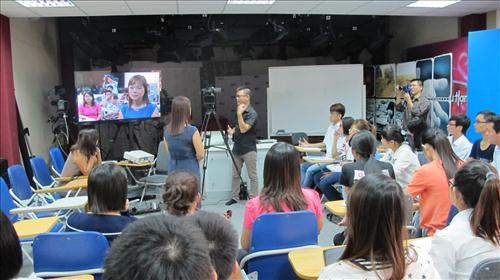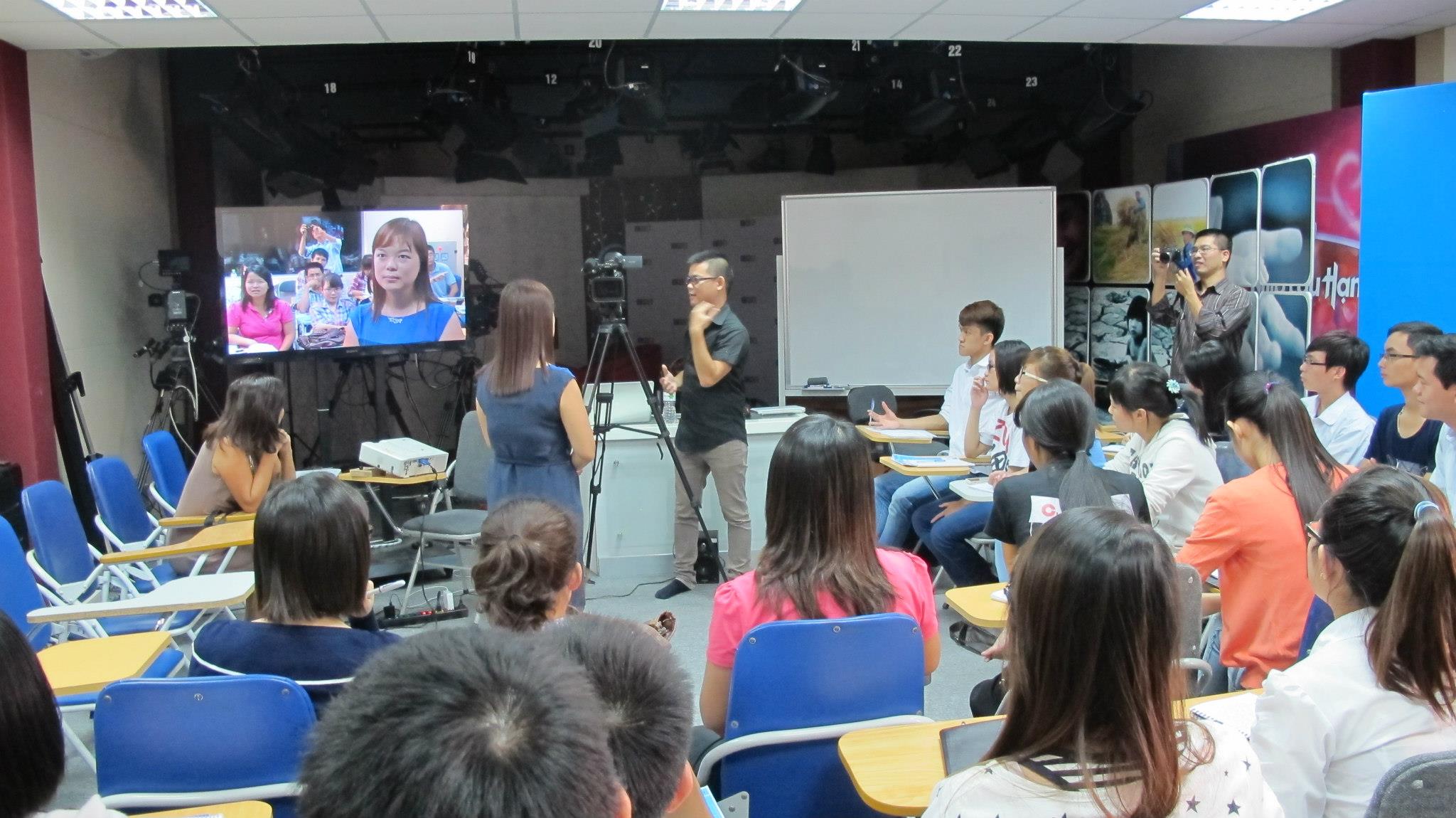
Other related articles:
The Faculty of Journalism and Communication is preparing to celebrate its 25th anniversary.
The professor fostered the development of the Journalism and Communication department.

A practical training session for journalism students.
New training model
In recent years, driven by practical demands for quality education in the context of integration and development, reforming training methods to enhance student initiative, build lifelong learning skills, and improve the quality of human resources with high competitiveness in a highly internationalized environment has become a key focus. The University of Social Sciences and Humanities (Vietnam National University, Hanoi) is one of the leading higher education institutions in transitioning from a semester-based system to a credit-based system since 2007, and the Faculty of Journalism and Communication has also reformed its training programs in this direction, yielding many benefits thanks to the flexibility of the curriculum and the increased student initiative.
The current Bachelor of Journalism program curriculum is designed with a total of 134 credits, comprising 5 modules of knowledge blocks: General knowledge within the Vietnam National University, Hanoi; general knowledge by field; general knowledge by discipline and group of disciplines; and specialized knowledge and orientation. All 5 knowledge blocks are designed with a system of compulsory and elective courses. The number of elective courses is usually 3-4 times greater than the number of compulsory courses. Students have complete autonomy in planning their studies and choosing elective courses that align with their future career aspirations.
A long-standing shortcoming of journalism training institutions has been the lack of practical training opportunities for students. The Faculty of Journalism and Communication has made significant efforts to develop and successfully establish the Center for Journalism and Communication Professional Skills, equipped with modern facilities for television, radio, online journalism, and photojournalism that meet the required standards for student practice. Many student practice projects have been broadcast on central and local radio and television stations.
The Faculty of Journalism and Communication has actively signed numerous strategic cooperation agreements with the Vietnam Journalists Association and media agencies nationwide, inviting many experienced journalists to participate in teaching and mentoring students. In addition to securing funding from foreign training projects to organize numerous scientific seminars and short-term training courses, the Faculty has established a joint undergraduate training program with Guangxi University (China), becoming one of the first training institutions in Vietnam to organize international joint training programs at the undergraduate level.Master's degree in Media Management from the University of Stirling.(Older brother)...

The students are trying out fieldwork.
New challenges
Over the past eight years of implementing the credit-based training model, the Faculty of Journalism and Communication has faced numerous difficulties and challenges.
Firstly, lecturers face immense workload and pressure to meet the requirements of credit-based training. Developing learning materials, course outlines, study guides, course websites, lectures, textbooks, etc., is essential and urgent, requiring significant effort and time from lecturers. Furthermore, lecturers must also act as academic advisors, guiding and advising students throughout their studies, helping them choose the best and most suitable learning methods for each individual. Meanwhile, the faculty lacks sufficient human resources, and the university's policies regarding lecturers are still inadequate compared to the effort and time lecturers invest in their courses and students.
Secondly, there is the technological factor, especially the software system that helps lecturers and students monitor and evaluate the entire learning process, from course registration, academic review, course registration (via intranet and, since the 2009-2010 academic year, via the internet); organizing and managing course classes; organizing student registration for dual degrees, collecting tuition fees based on registered credits; evaluating lectures, innovating testing and evaluation, etc. The current training management software still has many shortcomings and needs to be improved soon.
Thirdly, many students have mindsets and study habits that are not suitable for credit-based training. This is because reducing class time does not mean reducing learning requirements. Meanwhile, some journalism students currently lack initiative in self-study and research, and are not actively involved in practical program production.
Fourth, class sizes are still too large, so the activities of credit-based training are not truly tailored to each student. Finally, journalists from media organizations also need to make more effort and prepare better for credit-based training activities.
The rapid development of the media industry has placed significant pressure on journalism and media training, demanding the training of journalists who possess both a solid theoretical foundation and proficient professional skills to meet societal needs and excel in fulfilling the tasks assigned by the Party and the State. This is the goal and direction of development for the Faculty of Journalism & Communication, striving to continuously improve the training process and enhance the quality of education.
| Established in 1990, after 25 years, the Faculty of Journalism and Communication has trained over 10,000 Bachelor's degree holders, over 250 Master's degree holders, and 2 Doctoral degree holders. The employment rate for graduates within one year of graduation is typically 90%. The Faculty has compiled 20 textbooks, 24 specialized lecture notes, nearly 30 monographs, and translated 15 foreign documents. It has also conducted over 40 scientific research projects at various levels and published over 200 scientific works both domestically and internationally. |
Author:Assoc. Prof. Dr. Dang Thi Thu Huong
Newer news
Older news